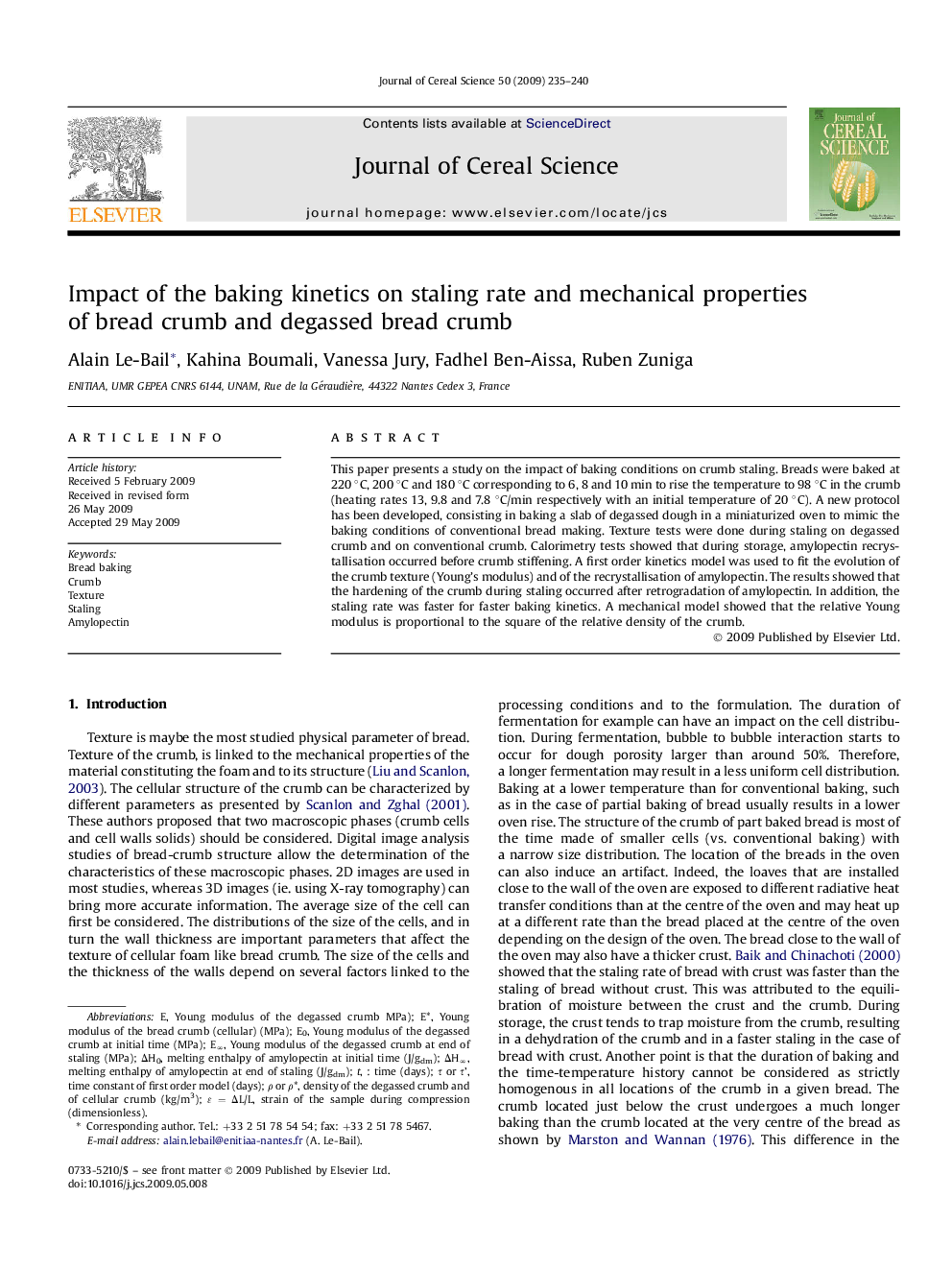| Article ID | Journal | Published Year | Pages | File Type |
|---|---|---|---|---|
| 4516489 | Journal of Cereal Science | 2009 | 6 Pages |
This paper presents a study on the impact of baking conditions on crumb staling. Breads were baked at 220 °C, 200 °C and 180 °C corresponding to 6, 8 and 10 min to rise the temperature to 98 °C in the crumb (heating rates 13, 9.8 and 7.8 °C/min respectively with an initial temperature of 20 °C). A new protocol has been developed, consisting in baking a slab of degassed dough in a miniaturized oven to mimic the baking conditions of conventional bread making. Texture tests were done during staling on degassed crumb and on conventional crumb. Calorimetry tests showed that during storage, amylopectin recrystallisation occurred before crumb stiffening. A first order kinetics model was used to fit the evolution of the crumb texture (Young's modulus) and of the recrystallisation of amylopectin. The results showed that the hardening of the crumb during staling occurred after retrogradation of amylopectin. In addition, the staling rate was faster for faster baking kinetics. A mechanical model showed that the relative Young modulus is proportional to the square of the relative density of the crumb.
